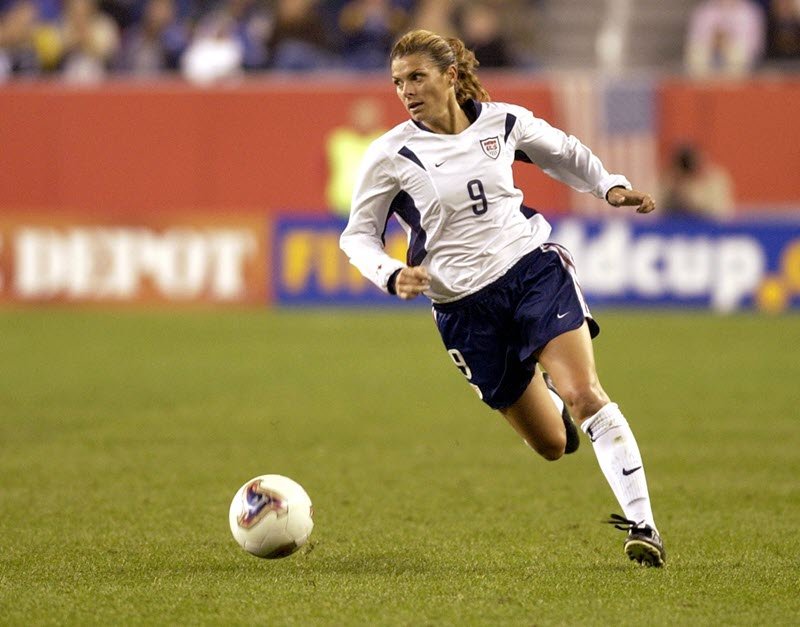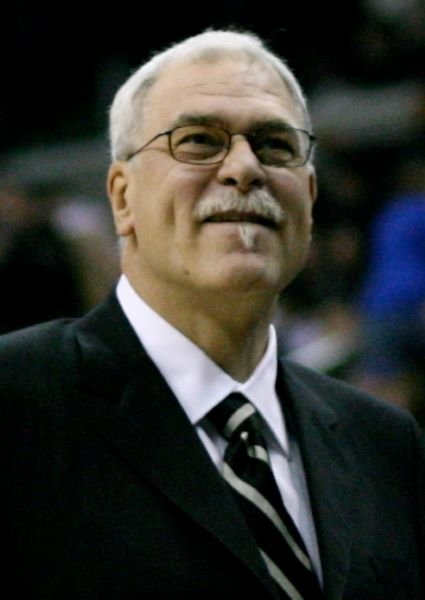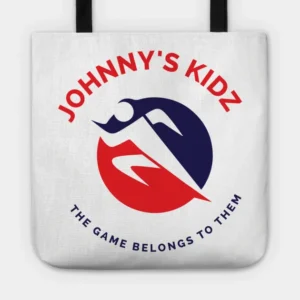Athletic Excellence: Unveiling the Champion Within
Fostering Holistic Athletic Excellence: Guiding Young Athletes to Success
Introduction
When we reflect on the journey to athletic excellence, our minds naturally leap to images of rigorous training.
Furthermore, we envision early morning runs and countless hours dedicated to perfecting technique.
However, this journey transcends the physical realm. It’s about nurturing the mind, body, and spirit to create well-rounded individuals who excel not just in sports but in all aspects of life.
Additionally, athletic excellence isn’t merely about winning medals or breaking records; it’s a holistic pursuit that shapes character and instills values that last a lifetime.
Therefore, whether you’re a parent cheering from the sidelines or a coach guiding the next generation of athletes, understanding this broader perspective is crucial.
The Importance of Athletic Excellence
Excellence in sports is a powerful teacher. It instills discipline as young athletes learn to balance practice with schoolwork and social activities.
Moreover, this discipline often translates to better time management and, consequently, a stronger work ethic in other areas of life.
Think about it: the same dedication required to wake up for 5 AM practices are the kind of dedication that helps students excel in their studies or professionals advance in their careers.
Perseverance is another vital lesson.
Sports are fraught with challenges, from the agony of defeat to the frustration of injuries.
Learning to push through these difficulties builds a resilience that serves athletes well beyond the playing field.
It teaches them that setbacks are not the end but rather steppingstones to future success.
Moreover, sports provide a unique arena for developing resilience.
The journey of an athlete is filled with highs and lows, victories, and setbacks.
The ability to bounce back from a tough loss or a disappointing performance, therefore, is a testament to their inner strength.
This resilience isn’t just useful in sports; it prepares them to face life’s inevitable challenges with a steady and determined spirit.
But how do you translate that sentiment to a group of tired 10-year-olds?
By creating a supportive environment where every effort is celebrated, where mistakes are seen as learning opportunities, and where the joy of the game is never overshadowed by the pressure to win.
It’s about showing them that the skills they’re honing on the field—discipline, perseverance, resilience—are the very skills that will help them navigate the complexities of life.
Take a moment to reflect on your own experiences.
Remember that one coach who believed in you even when you doubted yourself?
Or the pride you felt when you finally nailed that difficult move? Those moments are the essence of athletic excellence.
They remind us that the journey is just as important as the destination and that the true measure of a champion lies within.
So, as you guide your young athletes, remember to nurture not just their physical abilities but their mental and emotional well-being too.
Celebrate their small victories, help them learn from their losses, and most importantly, instill in them the values of discipline, perseverance, and resilience.
Because in the end, it’s these qualities that will help them become not just better athletes, but better people.
The Foundation of Athletic Excellence
When it comes to nurturing young athletes, the road to success isn’t paved with shortcuts.
It’s built on a foundation of consistent effort, careful planning, and unwavering support.
As parents and coaches, we play pivotal roles in this journey, guiding our young stars toward their full potential.
But where do we begin? Let’s delve into two crucial aspects: setting goals and building a strong fitness foundation.
The Importance of Setting Goals
Short-term and Long-term Goal Setting for Young Athletes
Imagine trying to reach a destination without a map. Frustrating, isn’t it? That’s what it’s like for young athletes without clear goals.
Goals give direction, provide motivation, and make the journey rewarding.
Short-term goals might be mastering a new technique or improving a personal best.
These are the steppingstones that keep young athletes engaged and excited about their progress.
Long-term goals, on the other hand, are the bigger dreams – making the varsity team, earning a scholarship, or even competing at a national level.
These goals provide a vision of what’s possible and help athletes push through tough times. But how do we ensure these goals are effective?
The Role of SMART Goals
Enter SMART goals – a concept that’s as powerful as it is simple.
SMART stands for Specific, Measurable, Achievable, Relevant, and Time-bound.
Let’s break it down:
- Specific: Goals should be clear and precise. Instead of “get better at soccer,” aim for “improve dribbling skills with both feet.”
- Measurable: Quantify progress. How will you know when the goal is achieved? “Increase running speed by shaving 2 seconds off the 100-meter dash time” is measurable.
- Achievable: Goals should be challenging yet attainable. Setting a goal to run a marathon next month might not be realistic for a beginner, but running a 5K could be.
- Relevant: Goals should align with broader ambitions. If an athlete dreams of being a swimmer, setting a goal related to swimming skills makes more sense than focusing on unrelated sports.
- Time-bound: Set a deadline. A goal without a timeline is just a wish. “Improve endurance within three months” gives a clear timeframe.
By integrating SMART goals, we create a roadmap that transforms aspirations into actionable steps.
It’s like giving our athletes a compass to navigate their journey.
Building a Strong Foundation Through Basic Fitness
The Fundamentals of Physical Fitness: Balance, Coordination, and Agility
Picture building a house without a solid foundation. It wouldn’t stand for long, right?
Similarly, young athletes need a robust fitness foundation to excel.
This foundation rests on three pillars: balance, coordination, and agility.
- Balance: Essential for all sports, balance helps athletes control their bodies and maintain stability, whether on a beam or in a sprint.
- Coordination: The ability to use different parts of the body together smoothly and efficiently is crucial, from dribbling a basketball to executing a perfect dive.
- Agility: This is the capacity to move quickly and change direction with ease, critical in sports like soccer and tennis.
Starting with Basics: Age-Appropriate Exercises and Their Benefits
When it comes to young athletes, it’s important to start with the basics.
Age-appropriate exercises not only build physical strength but also enhance motor skills and prevent injuries.
For younger children, simple activities like playing tag, hopping on one foot, or balancing on a beam can be incredibly beneficial.
These exercises develop balance and coordination in a fun and engaging way.
As they grow, introducing more structured activities like obstacle courses or basic strength training (think bodyweight exercises) can help.
For older children and teenagers, incorporating a variety of exercises ensures a well-rounded fitness routine.
This can include running drills for agility, balance exercises like yoga or Pilates, and coordination activities such as juggling or dribbling drills.
The key is to keep it varied and fun, preventing burnout and maintaining enthusiasm.

“Young athletes thrive when they are supported holistically, which means attention to character, teamwork, and resilience.”
– Mia Hamm, Retired Professional Soccer Player
Training for Excellence: A Guide for Parents and Coaches of Youth Athletes
When it comes to nurturing young athletes, the training approach can make all the difference.
Understanding and implementing different types of training—strength, endurance, and flexibility—lays the foundation for excellence.
Let’s dive into each one and explore how you can create a balanced and effective training regimen.
Strength Training: Building Strong Foundations
Strength training for young athletes isn’t about lifting heavy weights; it’s about developing fundamental muscle strength through age-appropriate exercises.
Bodyweight exercises such as push-ups, squats, and lunges are perfect starting points.
These exercises not only build strength but also improve coordination and balance, crucial elements for any sport.
The benefits of strength training are multifaceted. It enhances muscle power, which can improve performance in almost any sport.
Additionally, strong muscles support joints, reducing the risk of injuries.
A well-rounded strength training program can be the bedrock of a young athlete’s physical development.
Endurance Training: Building Stamina and Cardiovascular Health
Endurance training focuses on developing the stamina and cardiovascular health necessary for sustained athletic performance.
Activities like running, cycling, and swimming are excellent choices.
These exercises boost heart health, increase lung capacity, and improve overall endurance.
Incorporating fun, engaging activities keeps young athletes motivated.
Think about organizing games that require constant movement, like tag or relay races.
This not only builds endurance but also keeps the training environment lively and enjoyable.
Flexibility: The Importance of Stretching and Injury Prevention
Flexibility training often takes a back seat but is equally crucial.
Regular stretching exercises improve the range of motion, enhance performance, and most importantly, prevent injuries.
Simple routines such as dynamic stretches before workouts and static stretches afterward can make a significant difference.
Yoga is another excellent tool for flexibility.
It not only enhances physical flexibility but also teaches young athletes to listen to their bodies, promoting mindfulness and body awareness—skills that are valuable both on and off the field.
Importance of Consistency and Progression
Consistency is the cornerstone of any successful training program.
Creating a balanced training schedule that incorporates strength, endurance, and flexibility training ensures comprehensive development.
Creating a Balanced Training Schedule
Design a weekly schedule that balances these different types of training.
For instance, alternate days for strength and endurance training, with flexibility exercises included daily.
This keeps the routine varied and reduces the risk of overuse injuries.
Tracking Progress and Setting Milestones
Tracking progress is vital. Use simple tools like journals or apps to record workouts, noting improvements and challenges.
Setting short-term and long-term milestones keeps young athletes motivated and provides a sense of accomplishment.
Celebrating these milestones, no matter how small, reinforces positive behavior and commitment.
Gradual Increase in Training Intensity
Progression should be gradual. Start with manageable loads and intensities, then slowly increase as the athlete’s capacity grows.
This gradual increase not only boosts performance but also minimizes the risk of burnout and injuries.
It’s essential to listen to the athletes and adjust the intensity based on their feedback and performance.
Bringing It All Together
Training for excellence in youth sports is a journey that requires a thoughtful, balanced approach.
By focusing on strength, endurance, and flexibility, and emphasizing consistency and progression, we set young athletes on the path to success.
Remember, the goal is not just to build better athletes but also to foster a lifelong love for physical activity and health.
Parents and coaches, your support and guidance are the keys to unlocking the potential within these young athletes.
Embrace this journey with patience and enthusiasm, and watch as they grow not just as athletes, but as confident, resilient individuals.
For further reading and resources, consider visiting sites like KidsHealth and Rutgers SAFETY Clinic (Sports Awareness for Educating Today’s Youth ™), which offer comprehensive guides on youth athletic development.
The Champion’s Mindset
Developing Mental Toughness
When we think of champions, we often focus on their physical prowess, but what truly sets them apart is their mental resilience.
Developing mental toughness in young athletes is as crucial as any physical training.
Techniques for Building Mental Resilience
One key technique is visualization.
Visualization involves athletes mentally rehearsing their sport, picturing themselves performing successfully.
This not only prepares them for competition but also builds confidence.
Imagine a young basketball player visualizing making a free throw—seeing the ball arc perfectly through the hoop, feeling the motion in their muscles.
This practice creates a mental map that can be drawn upon in actual gameplay.
Positive self-talk is another powerful tool. The words athletes use with themselves can significantly impact their performance.
Encourage them to replace negative thoughts with positive affirmations.
Instead of thinking, “I can’t do this,” they should say, “I’ve trained for this, and I am capable.”
This shift in mindset can make a world of difference.
The Role of Sports Psychology in Youth Sports
Sports psychology isn’t just for elite athletes. It plays a crucial role in youth sports as well.
Psychologists work with young athletes to manage stress, build confidence, and improve focus.
Techniques such as goal setting, relaxation exercises, and mindfulness can help young athletes handle the pressures of competition.
For instance, teaching a young soccer player to focus on their breathing during a high-stakes penalty kick can calm their nerves and sharpen their concentration.
Overcoming Obstacles and Staying Motivated
Challenges and setbacks are inevitable in sports, but how athletes respond to them defines their journey.
Handling Setbacks and Turning Failures into Learning Opportunities
Failure isn’t the end—it’s a steppingstone to success. Share stories of athletes who faced setbacks but used them as learning opportunities.
Take Michael Jordan, who famously said, “I’ve missed more than 9,000 shots in my career… I’ve failed over and over and over again in my life. And that is why I succeed.”
This mindset transforms failures into valuable lessons, fostering growth and resilience.
Inspirational Stories of Young Athletes Who Overcame Challenges
Consider the story of Bethany Hamilton, who lost her arm in a shark attack at the age of 13 but returned to competitive surfing just a year later.
Her determination and grit are a testament to what young athletes can achieve with the right mindset and support.
The Importance of a Supportive Environment: Parents, Coaches, and Peers
Creating a supportive environment is paramount.
Parents, coaches, and peers all play a role in nurturing a young athlete’s mental toughness.
For parents, it means providing unconditional support and encouragement. It’s about celebrating effort and improvement rather than just victories.
For coaches, it involves fostering a positive team culture where athletes feel valued and understood.
This can be achieved through regular feedback, team-building activities, and open communication.
Peers also influence an athlete’s mindset. Encourage team bonding and a culture of mutual support.
When athletes feel that their teammates have their back, it boosts their confidence and motivation.
In conclusion, developing a champion’s mindset in young athletes requires a holistic approach.
Integrating visualization, positive self-talk, and sports psychology into our practices, coupled with handling setbacks constructively and ensuring a supportive environment, we can help young athletes build the mental toughness they need to succeed.
And remember, the journey of developing mental resilience is a marathon, not a sprint. Every step forward, no matter how small, is progress.
So, how will you support your young athlete in cultivating a champion’s mindset today?
Nutrition and Recovery: The Backbone of Youth Athletic Performance
Ever watched a garden grow? You plant the seeds, water them diligently, and ensure they get plenty of sunlight.
Over time, those tiny seeds transform into a flourishing garden.
Much like those plants, young athletes need the right nourishment and care to blossom into their full potential.
Let’s dive into the essentials of nutrition and recovery, the twin pillars supporting youth athletic performance.
Key Nutritional Strategies for Athletes
Essentials of a Balanced Diet: Macronutrients and Micronutrients
Imagine your body as a finely tuned car. To keep it running smoothly, you need the right fuel.
For our young athletes, this means a balanced diet rich in macronutrients and micronutrients.
- Macronutrients: These are the big guns – carbohydrates, proteins, and fats. Firstly, carbohydrates serve as the primary energy source. Secondly, proteins repair and build muscle. Lastly, fats provide long-lasting energy. To put it another way, think of carbs as the high-octane fuel, proteins as the engine maintenance, and fats as the endurance boost.
- Micronutrients: These include vitamins and minerals like iron, calcium, and vitamin D, which are crucial for overall health and specific functions like bone growth and immune support. Without these tiny powerhouses, even the most balanced diet would fall short.
Hydration Tips and the Importance of Staying Hydrated
Hydration isn’t just about quenching thirst. It’s about maintaining the body’s ability to perform and recover.
- Hydration Tips: Encourage regular sips of water throughout the day, not just during practice. For intense activities lasting more than an hour, sports drinks can replenish electrolytes lost through sweat.
- Why It Matters: Dehydration can lead to decreased performance, increased heart rate, and a higher risk of heat-related illnesses. Simply put, water is the lifeblood of our athletic garden.
Pre- and Post-Training Nutrition
What you eat before and after training can significantly impact performance and recovery.
- Pre-Training: Aim for a meal rich in carbohydrates and moderate in protein about 2-3 hours before practice. Think whole grain toast with peanut butter and a banana. This fuels the body for optimal performance.
- Post-Training: Following the game, the focus immediately shifts to replenishing glycogen stores and repairing muscles. Therefore, a combination of protein and carbs within 30 minutes of finishing can significantly speed up recovery. For instance, Greek yogurt with fruit or a turkey sandwich on whole grain bread works wonders.
Importance of Rest and Recovery
If nutrition is the fuel, rest and recovery are the pit stops. Without them, even the most well-prepared athlete can falter.
The Science of Sleep and Its Impact on Performance
Sleep isn’t just about feeling rested; it’s about the body’s chance to repair and grow.
- The Science: During deep sleep, the body releases growth hormones, repairs tissues, and strengthens the immune system. For young athletes, getting 8-10 hours of quality sleep is crucial for peak performance.
- Impact on Performance: Lack of sleep can lead to impaired cognitive function, slower reaction times, and a higher risk of injury. Think of it as running on an empty tank – you won’t get far.
Effective Recovery Techniques: Stretching, Foam Rolling, and Massage
Recovery techniques are the unsung heroes of athletic performance.
- Stretching: Regular stretching increases flexibility, reduces muscle stiffness, and prevents injuries. Incorporate dynamic stretches before and static stretches after practice.
- Foam Rolling: This self-massage technique helps release muscle tightness and improve blood flow. It’s like giving your muscles a much-needed tune-up.
- Massage: Professional massages can target deeper muscle layers and aid in faster recovery. It’s an investment in the long-term health and performance of the athlete.
Managing Overtraining and Recognizing Signs of Burnout
In the quest for greatness, it’s easy to push too hard.
But overtraining can backfire, leading to burnout and injuries.
- Signs of Overtraining: Persistent fatigue, irritability, decreased performance, and frequent injuries are red flags. If you notice these, it’s time to dial back.
- Preventing Burnout: Ensure a balanced training schedule that includes rest days, varied activities to prevent monotony, and open communication. Encourage athletes to speak up if they’re feeling overwhelmed.
In the end, cultivating a successful youth athlete is much like tending to a garden.
It requires the right balance of nutrients, consistent care, and attention to recovery.
By embracing these strategies, you’re not just nurturing athletic talent – you’re fostering lifelong habits of health and wellness.
Remember, every great garden starts with a single seed. How will you nurture yours today?
“Great coaches recognize that fostering a love for the game in young athletes is as important as teaching technique.”
– Phil Jackson, Hall of Fame Basketball Coach

Personal Growth and Development: A Coach’s Perspective
When I think about the essence of coaching youth sports, one word comes to mind: growth.
Not just growth in skill or athletic prowess, but personal growth.
Watching a young athlete evolve from a hesitant beginner to a confident player is nothing short of magical.
Yet, the journey is often riddled with failures and setbacks, which, if approached correctly, can be powerful catalysts for growth.
Learning from Failures and Setbacks
Every missed shot, lost game, or moment of doubt holds a treasure trove of lessons.
Encouraging a growth mindset in young athletes is crucial.
Instead of seeing failure as a dead end, we need to teach our kids to view it as a detour—a temporary obstacle that offers a new perspective and a chance to improve.
Consider a moment when a young athlete fumbles a critical play. It’s easy for them to get discouraged.
But this is where we, as coaches and parents, step in.
“What did you learn from this experience?” can be a more powerful question than “Why did you fail?”
Reflecting on performance, identifying areas for improvement, and acknowledging what went wrong while celebrating what went right can transform a setback into a steppingstone.
Setting New Challenges and Continuous Improvement
Stagnation is the enemy of growth. The moment we stop challenging ourselves is the moment we stop growing.
For young athletes, embracing new challenges keeps the journey exciting and rewarding.
Whether it’s mastering a new skill, taking on a leadership role within the team, or simply setting a personal best, new goals keep the fire burning.
Continuous improvement isn’t just about being better than others; it’s about being better than you were yesterday.
Setting new goals, no matter how small, and striving to achieve them instills a sense of accomplishment and purpose.
It’s like climbing a mountain—each step, no matter how arduous, brings you closer to the peak.
Balancing Sports with Academics and Social Life
However, growth in sports shouldn’t come at the expense of other important areas of life.
Balancing sports with academics and social life is vital for holistic development.
It’s like juggling; each aspect—sports, school, friends, and family—needs attention. Neglect one, and the balance falters.
Encouraging young athletes to excel in the classroom, be present in their social circles, and maintain strong family bonds builds a well-rounded individual.
Sports teach discipline, teamwork, and perseverance, but academics sharpen the mind, and social interactions develop emotional intelligence.
Real-World Application
Let’s look at a real-world example: the story of a young soccer player I’ll call Mia. Mia loved soccer but struggled with time management.
She was a star on the field but often neglected her homework and missed out on social events.
Her grades started slipping, and she felt isolated. We had a heart-to-heart and came up with a plan.
Mia set specific, achievable goals for her academics, such as completing assignments before practice.
She also scheduled time with friends and family. Slowly but surely, Mia found her rhythm.
Her grades improved, her social life blossomed, and she continued to shine on the soccer field.
Mia’s story is a testament to the power of balance and continuous growth.
Final Thoughts
As coaches and parents, our role is to guide these young athletes through their ups and downs.
Consequently, we must teach them to embrace challenges.
Furthermore, they need to learn from failures and strive for continuous improvement.
It’s not just about building better athletes; it’s about nurturing better human beings.
So, next time your child or player faces a setback, remember it’s not the end of the road, but a bend in the path.
Encourage them to learn, grow, and keep moving forward.
After all, personal growth and development are the true goals of youth sports.
In the words of Michael Jordan, “I can accept failure, everyone fails at something. But I can’t accept not trying.” Let’s inspire our young athletes to keep trying, keep learning, and keep growing.
Conclusion
In wrapping up, let’s revisit the core themes we’ve discussed.
We’ve explored the significance of a holistic approach to nurturing athletic excellence in our youth.
It’s about more than just physical prowess—it’s about fostering mental resilience, emotional intelligence, and a love for the game.
This well-rounded development paves the way for not only exceptional athletes but well-rounded individuals.
Parents and coaches, your role is paramount. Indeed, you’re the guiding lights, the support systems, and the cheerleaders.
Your encouragement, patience, and dedication lay the foundation for these young athletes to flourish.
Remember, the goal isn’t just to win games but to cultivate an environment where each child feels valued, motivated, and empowered to reach their full potential.
Now, let’s translate these principles into action.
Imagine the impact when you commit to these practices, inspiring confidence and perseverance in every young athlete you support.
Encourage their curiosity, celebrate their progress, and, most importantly, be there for them through the highs and lows.
For those seeking to deepen their understanding and support, here are some invaluable resources:
- Books:
- “The Talent Code” by Daniel Coyle: A deep dive into unlocking the secret of skill in sports.
- “Mindset: The New Psychology of Success” by Carol S. Dweck: Understanding the power of a growth mindset.
- Websites:
- Positive Coaching Alliance: Provides resources and training to create positive youth sports experiences.
- Changing the Game Project: Focuses on putting the “play” back in “play ball” through education for parents and coaches.
- Community Programs:
- Local youth sports leagues: Engaging with community leagues can provide structured environments for development.
- Workshops and seminars: Look for events hosted by sports psychology experts and experienced coaches.
Let’s embark on this journey together, nurturing the next generation of champions, not just in sports, but in life. The effort you invest today will echo in the athletes’ futures, creating a legacy of passion, determination, and holistic success. Keep fostering the champion within each young athlete, one practice, one game, and one encouraging word at a time.
A: A holistic approach to athletic excellence involves developing not just the physical skills of young athletes, but also their mental, emotional, and social well-being. Moreover, this approach emphasizes the importance of character, teamwork, resilience, and a love for the sport, thereby ensuring well-rounded growth both on and off the field.
A: Parents can support their young athletes by encouraging a positive attitude towards sports. Additionally, they should celebrate effort over results while fostering a growth mindset. Furthermore, it’s crucial to provide emotional support and help manage stress. Equally important is creating a balanced schedule that allows for rest and recovery.
A: Coaches are instrumental in shaping young athletes’ experiences and attitudes towards sports. They provide technical training, strategic insights, and mentorship. Great coaches also focus on character-building, teamwork, and instilling a passion for continuous improvement.
A: First and foremost, start by integrating the holistic approach into your daily interactions with young athletes. Additionally, encourage balanced development by focusing on mental and emotional health alongside physical training. Furthermore, use positive reinforcement, set realistic goals, and create an inclusive and supportive environment.
A: To begin with, encourage a well-rounded schedule that includes academics, social activities, and rest. Additionally, promote time management skills to ensure that sports commitments do not overwhelm other important aspects of life. Finally, open communication with your child or team about their interests and well-being is key.
A: Approach conflicts with open communication and empathy. Encourage the young athletes to express their feelings and listen to all parties involved. Work towards a resolution that emphasizes respect, understanding, and teamwork. Sometimes involving a neutral third party, like another coach or counselor, can help mediate the situation.
Call to Action
Join Coach Johnny in cultivating the next generation of youth sports athletes.
Now is the time to put these principles into action. As parents and coaches, you hold the power to shape the futures of these young athletes.
Your guidance, support, and encouragement are the catalysts for their success, both on and off the field.
Think about the impact you can make.
Every positive word, every supportive gesture, every moment spent fostering a love for the sport can ignite a passion that lasts a lifetime.
Let’s build an environment where young athletes thrive not just as competitors, but as confident, resilient individuals.
Here are your next steps:
- Implement the Holistic Approach: Begin integrating mental, emotional, and social development into your training routines. Celebrate progress in all areas, not just physical achievements.
- Stay Informed and Engaged: Utilize the recommended resources. Read books like “The Talent Code” and “Mindset: The New Psychology of Success”. Visit websites such as the Positive Coaching Alliance and Changing the Game Project for valuable insights and tips.
- Join the Community: Connect with local youth sports programs and participate in workshops and seminars. Share your experiences and learn from others dedicated to fostering excellence in youth sports.
- Be a Role Model: Your behavior sets the standard. Show respect, demonstrate perseverance, and exhibit a genuine love for the game. Your young athletes will follow your lead.
Together, we can create a new generation of champions who excel not just in sports, but in all aspects of life.
Your commitment to these principles will resonate far beyond the playing field, leaving a legacy of passion, integrity, and holistic success.
So, let’s get started.
Embrace this journey, and soon you will witness the champions within each young athlete emerge, ready to conquer the world with their talents and spirit.
Join the JK Tribe
Coach Johnny is a youth sports coach with over 30 years of experience. He continues to coach various sports in various age groups (pre-high school) for all genders. He is also the founder of Johnny’s Kidz and the JK Tribe. If you would like to support his journey and become a Tribe member, reach out and Buy Coach A Cup of Coffee.
Remember, The Game Belongs to Them!
DISCLOSURE: We often review or link to products and services we regularly use and think you might find helpful. We use referral links wherever possible, which means if you click one of the links in this video or description and make a purchase, we may receive a small commission or other compensation.
We’re big fans of Amazon, and many of our links to products/gear are to those products on Amazon. We participate in the Amazon Services LLC Associates Program, an affiliate advertising program designed to allow us to earn fees by linking to Amazon.com and related sites.





